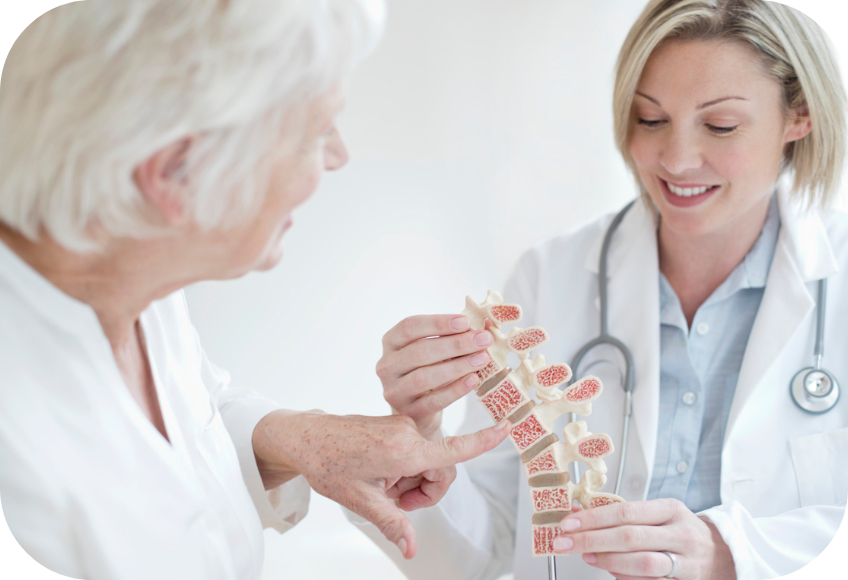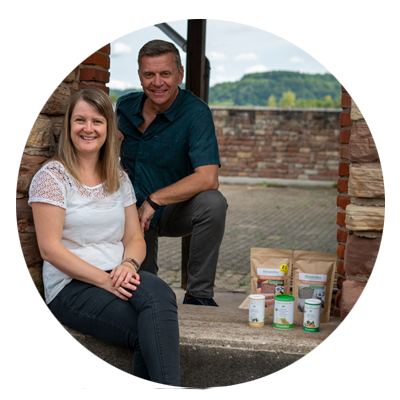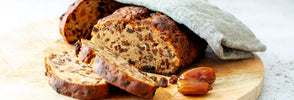
osteoporosis
Osteoporosis, also known as bone loss, is an illness that can occur particularly in old age. This is not a sudden disease, but a gradual change in the body that only becomes noticeable after many years.
What is osteoporosis?
Osteoporosis is a chronic disease of the skeletal system. It leads to the bones of losing density and stability, which makes them brittle and more susceptible to breaks. This process is creeping because the bone density decreases over many years without immediately feeling anything. Often the disease only notices when there is a broken bone - sometimes even after a slight load or a slight fall. Imagine your bones like a scaffold that supports your body. With increasing age, this scaffolding gradually loses substance, if not sufficiently ensured replacement. The bone breakdown predominates the bone structure. The risk is increased, especially for women after menopause, since the hormone level decreases and thus also decreases the effect of the estrogen for the bone structure.
Share information about your brand with your Customers. Describe A Product, Make Announcements, Or Welcome Customers to your Store.
Causes of osteoporosis
The causes of osteoporosis are diverse. In most cases, it is a primary osteoporosis that is either caused by age or hormonal changes that occur in women in menopause. But other factors also play an important role:
1. Age: With increasing age, the bone metabolism becomes slower and the natural degradation of the bone predominates.
2. Gender: Women generally have a higher risk because they have less bone mass compared to men. After the menopause, the lack of estrogen is added, which accelerates bone loss.
3. Genetic predisposition: If osteoporosis occurs in your family, the risk is higher that you could also be affected.
4. Lack of calcium and vitamin D: These two fabrics are essential for bone structure. A lack of calcium and vitamin D can significantly affect bone health.
5. Lack of movement: Regular physical activity promotes bone structure. If this stimulation is missing, there may be an accelerated bone breakdown.
6. Smoking and alcohol: Both harm to bone health. Smoking reduces the bone density and excessive alcohol consumption disturbs the calcium metabolism.
7. Certain medication: Long -term use of medication such as cortisone or medication against heartburn can negatively influence bone metabolism and inhibit calicum intake.
8. Sick kidney: In the kidneys, vitamin D is converted into its active shape. Vitamin D is responsible, among other things, for the inclusion of calcium in the bones. If the kidneys are sick, this conversion can only take place to a limited extent or no longer and therefore less calcium are included in the bones.
9. Creation: If there are not enough bases to neutralize excess acids in the body, the body uses the mineral deposits in the body. The bones are a particularly rich mineral depot. Here the calcium is withdrawn for acid neutralization.
10. Permanent stress and too many isolated carbohydrates: Both increase catabolic metabolic processes and thus promote bone loss.
Share information about your brand with your Customers. Describe A Product, Make Announcements, Or Welcome Customers to your Store.
Osteoporosis and histamine
Osteoporosis is not only a question of bone density, but also closely linked to other processes in the body. There is a connection to mastocytosis. Mastocytosis is a disease in which too many mast cells accumulate in the body and release large amounts of histamine. It is striking that people with mastocytosis often also have an increased risk of osteoporosis. This is because histamine promotes bone loss. This is exactly why the idea was developed to use antihistamines as therapy against osteoporosis - with the advantage that modern antihistamines have hardly any side effects. But histamine is not only an issue with mastocytosis. Allergies also seem to play a role in osteoporosis. This shows how important it is to look at the body as a whole. In addition to antihistamines, there are other measures that can support your bone health. Probiotics such as Lactobacillus Acidophilus can reduce inflammation and thus slow down bone loss.
Share information about your brand with your Customers. Describe A Product, Make Announcements, Or Welcome Customers to your Store.
Early signs of osteoporosis
The symptoms of osteoporosis often only occur when the disease is already well advanced. It is therefore important to pay attention to the early warning signs and carry out regular check -ups, especially if you belong to a risk group. The first signs can be:
- Back pain: These often arise from the slow collapse of the vertebral bodies.
- Acceptance of the body size: If you notice that you will be smaller over the years, this can be an indication that your vertebral body will be compressed by the bone loss.
- Changed posture: A curved posture or a round back can also be a sign of osteoporosis.
- Light broken bones: Fractions that occur with slight falls or bumps are a serious warning signal.
Share information about your brand with your Customers. Describe A Product, Make Announcements, Or Welcome Customers to your Store.
How is osteoporosis diagnosed?
A more precise examination is necessary if there are broken bones for no apparent reason or risk factors for osteoporosis.
🔬 Anamnesis & clinical examination
The doctor asks for earlier broken bones, risk factors such as lack of exercise, vitamin D deficiency or family stress. Loss of body size, round back (kyphosis) or pain without recognizable trauma can be indications of osteoporosis. The physical examination encompasses the measurement of the body size, posture control and knocking on the spine on pressure pain.
🔬 Imaging process & bone density measurement
Osteoporotic fractures are mostly visible on the X -ray image. CT or MRI are used for more precise assessment. The bone density is determined with the Dexa measurement to assess the risk of fracture. The Frax algorithm helps to calculate the likelihood of future broken bones.
🔬 Laboratory tests & differential diagnosis
Blood tests help exclude other causes of bone loss, for example kidney problems or hormone disorders. It is important to delimit diseases like osteomalacia or pituitary posphatics, since other therapies are necessary here.
Share information about your brand with your Customers. Describe A Product, Make Announcements, Or Welcome Customers to your Store.
Image with text
Histabalance® - The Histaminikus dietary supplement.
With great care We develop nutritional supplements in cooperation with doctors and therapiststhat specifically on the needs of those affected by one Histamine intolerance are coordinated.
So we ensure a wide range of know-how in the development of our nutritional supplements in order to give you more well-being.
prevention
Osteoporosis is not inevitable - you can do a lot to keep your bones healthy for a long time. Here are some simple but effective tips:
1. Sufficient calcium and vitamin D
Calcium is the most important building material for your bones. Adults should consume around 1,000 to 1,200 mg of calcium a day. If you do not adequately absorb calcium through the diet, a nutritional supplement can also be useful in consultation with your doctor. Vitamin D is necessary so that your body can absorb the calcium from food at all. Your body forms vitamin D under sunlight itself, but especially in the winter months it is often difficult to produce enough of it. Vitamin D preparations can help here. Before you take preparations on your own, have a blood test carried out and discuss the results in detail with your doctor.
2. Regular movement
It may sound banal, but physical activity is one of the best protective mechanisms against osteoporosis. Exercises where your muscles and bones are required are particularly effective - this includes, dancing, running and strength training. It doesn't necessarily have to be an intensive fitness program - regular walks or light exercise exercises can strengthen your bone density in the long term.
3. Definition of smoking and excessive alcohol consumption
Smoking reduces blood circulation and affects the nutrient supply to your bones. Alcohol in large quantities can interfere with calcium metabolism and contribute to bone loss.
4. Keep an eye on the hormone balance
Especially for women after menopause, it can make sense to have the hormone level checked regularly. A falling estrogen level increases the risk of osteoporosis. There are hormonal therapies that, in consultation with the doctor, can help to counter bone loss.
5. Magnesium
It is an important part of the bone tissue and significantly involved in calcium installation in the bones. Magnesium is also also responsible for the conversion of vitamin D. Magnesium also promotes anabolic metabolic processes and thus the bone structure.
Share information about your brand with your Customers. Describe A Product, Make Announcements, Or Welcome Customers to your Store.
Treatment of osteoporosis
Fortunately, if osteoporosis has already been diagnosed, there are many ways to treat the disease and prevent progression. Therapy is usually a combination of drug treatment and lifestyle changes.
💊 1. Medikamente
There are various drugs that can slow down bone loss or to stimulate the structure of new bone tissue. The most important groups of active ingredients include:
• Bisphosphonates: You inhibit the dismantling of the bones and can thus reduce the risk of broken bones.
• Denosumab: This antibody prevents cells from breaking down the bone.
• Selective estrogen receptor modulators (SERMS): They act similar to estrogen and can brake bone breakdown in women after menopause.
• Teriparatide: This drug promotes the structure of new bone tissue and is used in particularly severe cases of osteoporosis.
🍇 2. Nutrition and supplements
The diet should be low in salt and basic and contain the minerals that are important for the bones. Good calcium suppliers are, for example: broccoli, kale, chard, leaf salads, parsley, quinoa, amaranth, chia seeds, raisins and dry apricots. Your doctor may recommend taking dietary supplements in addition to a calcium -rich diet. Coffee consumption and the consumption of phosphate -rich soft drinks should be greatly reduced.
🚶🏼♀️ 3. Movement therapy
Physical activity remains crucial even with existing osteoporosis. You should get advice from a physiotherapist or doctor which exercises are best suited for you. Many health insurance companies also offer special osteoporosis sports courses in which you can learn targeted exercises.
And of course all measures that apply to prevent osteoporosis.
Share information about your brand with your Customers. Describe A Product, Make Announcements, Or Welcome Customers to your Store.
Everyday life with osteoporosis
Osteoporosis does not mean that you have to change your everyday life drastically. But there are a few things you should pay attention to to minimize the risk of broken bones:
💚 1. Crash prophylaxis: It is particularly important in old age to avoid falls. This includes removing stumbling blocks such as loose carpets or unsecured cables. Non -slip mats in the bathroom or handles in the shower can also help.
💚 2. Back -friendly behavior: Make sure you relieve your back in everyday life. Avoid heavy lifting and wearing preferred loads and spread over several shoulders.
💚 3. Regular check -ups: If you take medication or have already had fractures, you should regularly consult your doctor to check the bone density and check the success of the treatment.
Share information about your brand with your Customers. Describe A Product, Make Announcements, Or Welcome Customers to your Store.
Conclusion
👉🏼 With a healthy lifestyle, regular exercise and the right nutrition, you can do a lot to ensure that your bones stay strong for a long time. Even if you already have osteoporosis, there are numerous ways to treat the disease and minimize the risk of broken bones. It is best to start taking care of your bone health as early as possible - after all, they wear you for a lifetime!
Share information about your brand with your Customers. Describe A Product, Make Announcements, Or Welcome Customers to your Store.
Collapsible content
SOURCES

From those affected for those affected
We are Thomas and Michaela Zinser, founder of Histaminikus.
Because of the own histamine intolerance of Michaela and our son, we founded Histaminikus. The frustration does not find any suitable histamine food has spurred us to develop low -histamine food.
We would like to give you back a piece of quality of life. Feel free to look around with us.
Kind regards
Thomas and Michaela







